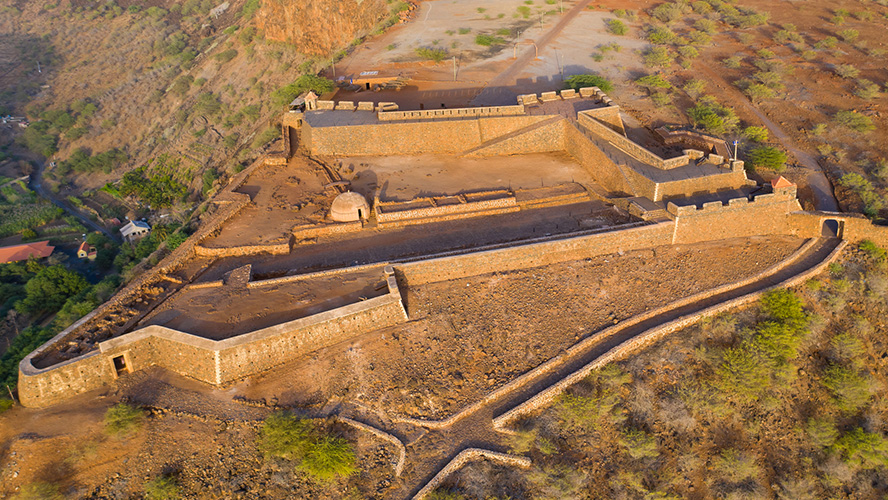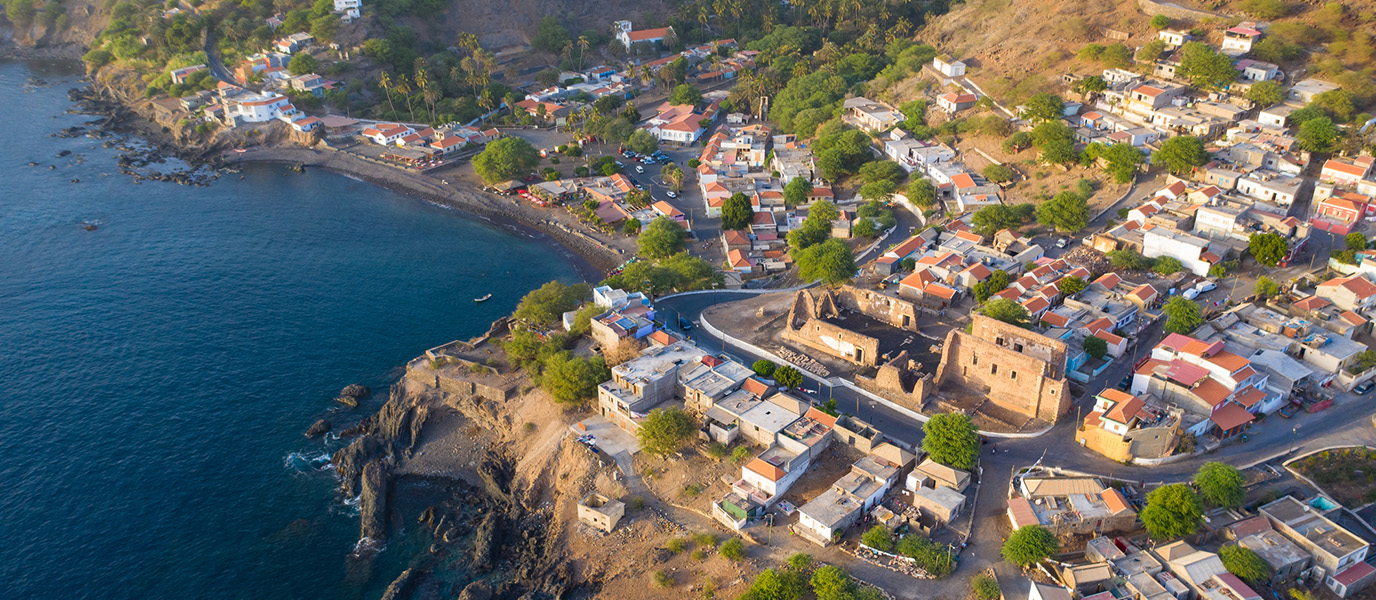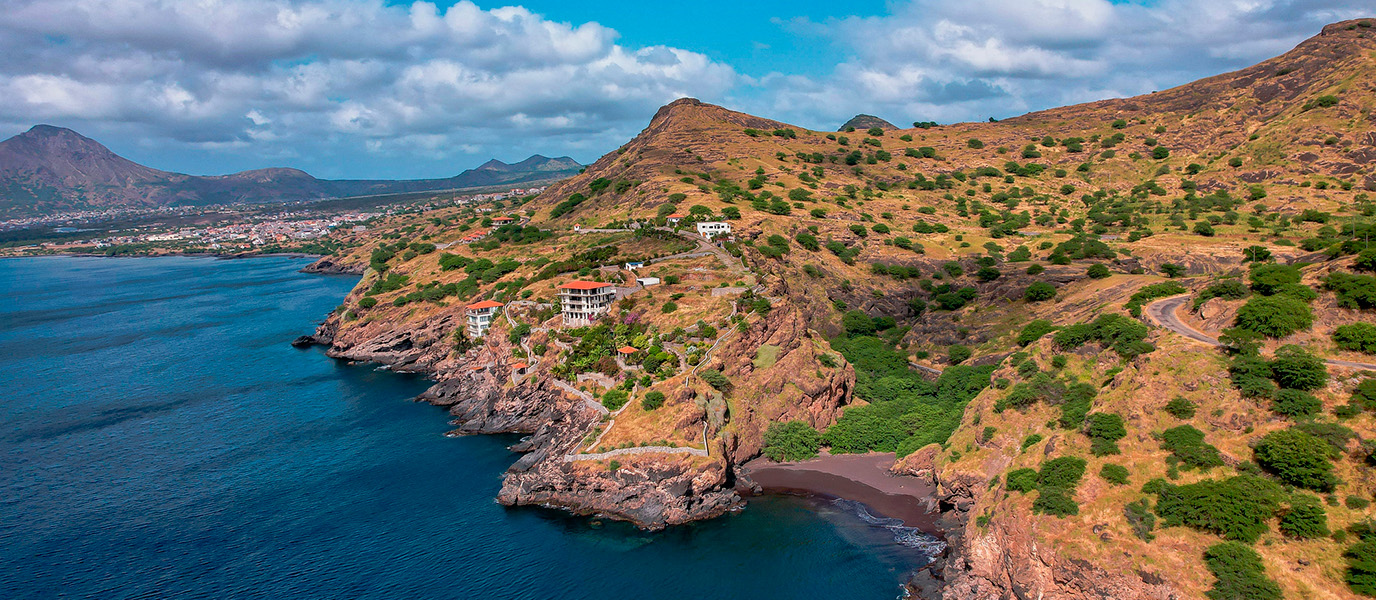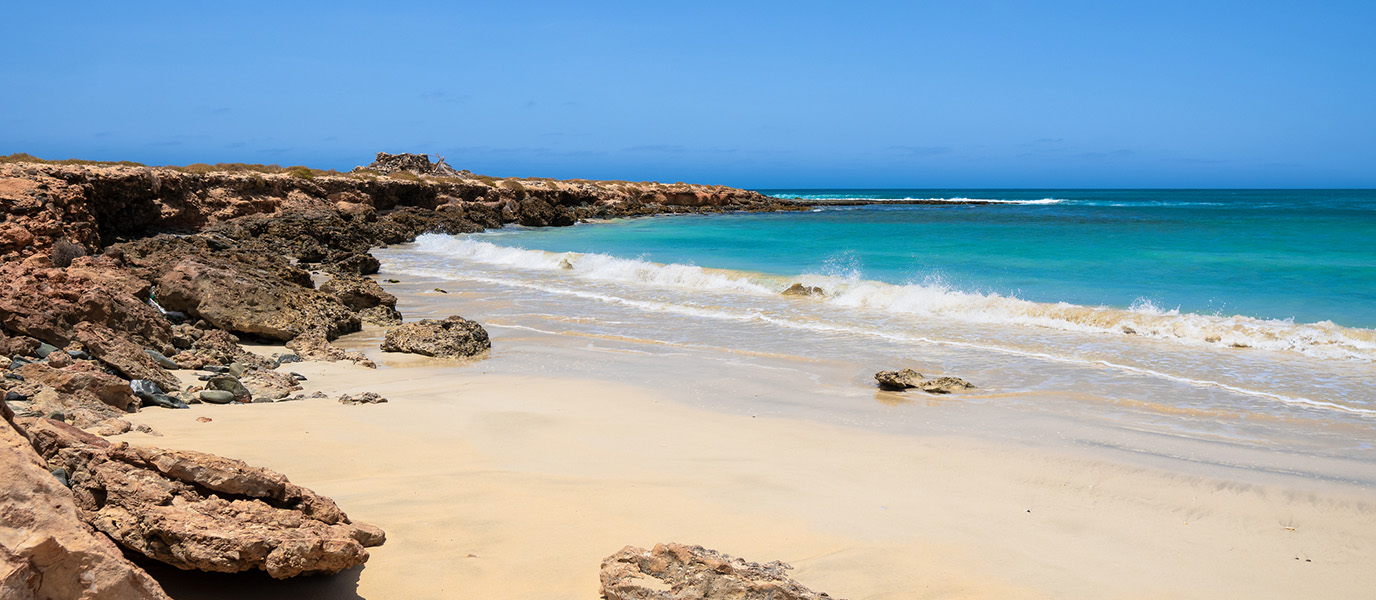Also known as Old City or Ribeira Grande de Santiago, Cidade Velha in Cape Verde was the first capital of the archipelago. Located 12 kilometres from Praia, on the island of Santiago, it was built by the Portuguese in 1462, prior to the discovery of the Americas, and was founded by the Genoese navigator Antonio Noli. Declared a World Heritage Site by Unesco in 2009, since the same year Cidade Velha has also been classified as one of the Seven Wonders of Portuguese Origin in the World.
To qualify for the above, in the year 2000 the architect Siza Vieira was commissioned to coordinate the rehabilitation of the city to adapt the historical quarter to the needs of the modern world and thus be eligible for both classifications. At present, the beautiful city, through which the navigators Christopher Columbus and Vasco da Gama passed, has a population of 3,500 people.
History of the city of Ribeira Grande
Cidade Velha was the earliest city built by the Europeans in the Afrotropics and the first capital city of Cape Verde, originally known as Ribeira Grande, a name that it shared with another city on the island. To avoid confusion, its name was changed to its current name of Cidade Velha. The city emerged due to the trade of slaves who came from Guinea Bissau and Sierra Leone to work in the plantations, blending two different worlds: Europe and Africa.
The town was an important port of call and a stopping place for navigators, some of them very famous. One of them, Christopher Columbus, made a stop in 1498 on his third voyage to the Americas. Another, Vasco da Gama, stopped here in 1497 on his way to India.
Due to its riches, Cidade Velha in Cape Verde was the subject of frequent pirate attacks, led, among others, by Francis Drake in 1585 and Cassard in 1712. However, in the second half of the eighteenth century, with the abolition of slavery, its economic strength began to decline and in 1769 it lost its status as a capital to Praia.
What to see in Cidade Velha
Cidade Velha, or Cidade de Ribeira, has important architectural and cultural heritage that is well worth visiting. It is home to Nossa Senhora de Rosario church, the oldest colonial church in the world. Built in Manueline style, corresponding with the Portuguese Gothic, it is located on Rúa Banana, the first street to be urbanised by the Portuguese in the tropics and one of the most picturesque roads in Cape Verde. The cathedral (Sé Catedral) was built from 1556 to 1693. In 1712, it was attacked and destroyed by corsairs and pirates, so only its ruins remain. The Royal Fortress of Sao Felipe, built in 1590 with stone brought from Portugal to defend the city from possible attacks, crowns Cidade Velha at a height of 120 metres. The fortress was ordered to be built by Philip II, King of Spain and Portugal, and was designed by the Portuguese engineer Joao Nunes. The Convent of San Francisco, from the mid-seventeenth century, served as a place of worship and training and was also attacked and partially destroyed by pirates in 1712. However, the most emblematic monument in Cidade Velha is the Pelourinho (Portuguese for pillory), a white marble construction where convicts were executed and slaves auctioned, a symbol of royal justice.

What to see on the island of Santiago
The island of Santiago is the largest island in the archipelago, the most historical and the most inhabited with a population of around 300,000. You must of course visit the capital, Praia, which has an interesting historical quarter and several museums that are worth visiting such as the Archaeology Museum, the Ethnographic Museum and the National Historical Archive, among others. The island is also home to one of the most enigmatic places in Cape Verde, the Serra Malagueta, inhabited by ‘los rebelados’, a group of people who build their houses from straw to imitate the manger in which Baby Jesus was born. In the north of the island is Tarrafal, a pretty fishing village. Other places to see on the island of Santiago, besides Cidade Velha, are Monte Tchota, Sao Jorge with its National Botanical Garden, Pedra Badejo and Sucupira Market. Another great draw are its beaches, such as Kebra Kanela, Portinho, Tarrafal, San Francisco, Praia Baixo and Cannis.
What to eat and where
Cidade Velha tiene una oferta suficiente para disfrutar de la cocina tradicional caboverdiana. Hay que probar los sabores de las recetas y platos típicos, como la cachupa rica, el plato nacional por antonomasia, que consiste en una especie de fabada de maíz con bacon y chorizo. El pescado es de muy buena calidad y lo sirven habitualmente a la parrilla. El más típico es la garopa, un pez rojo con el que se elabora un ‘caldo de peixe’ típico de las zonas de montaña. Otro plato tradicional es la djagacida, que tiene como base el tocino de cerdo preparado con harina y judías. Junto a la playa y en el litoral hay varios restaurantes con terraza que miran al mar y en los que se puede degustar un delicioso pescado fresco. Algunos de los restaurantes más conocidos son Batuku Espaço Cidade Velha, Baia de Coral o la Casa Velha.



















































































